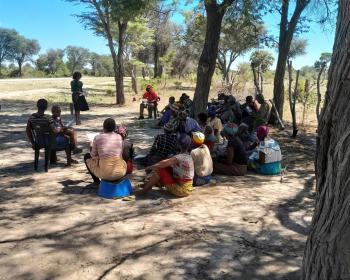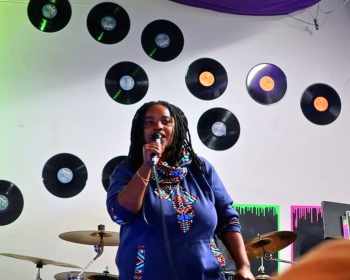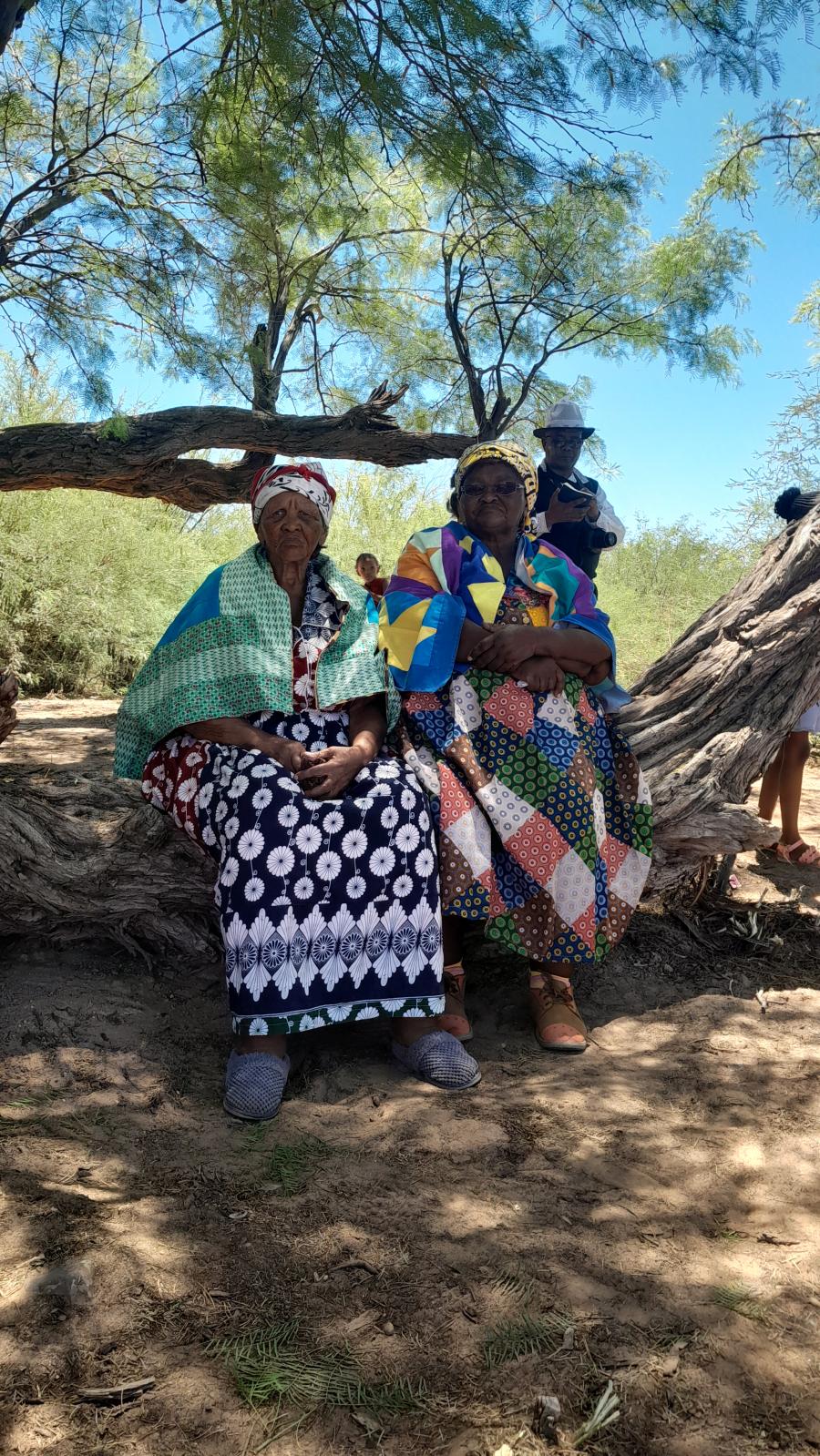At the beginning of colonization (c. 1885), Hai||om people occupied large tracts of north-central Namibia, from Etosha Pan eastward to the copper mountains around the present-day mining town of Tsumeb. This central position had, and still has, important implications for the history of relations between Hai||om and their neighbors. Hai||om access to copper was valued by the Owambo. Hai||om also had rich hunting grounds and later exercised some control over the movements of migrant laborers between the densely populated North and the labor-demanding settlers in the South. As a consequence, Owambo kingdoms were keen to incorporate Hai||om into their societies. German colonial officers signed treaties with them and the first ethnographers wrote extensively about them.
But Hai||om’s central position later worked to their detriment. Under the German colonial structures, their land was divided up among mining corporations, settler farmers, and the Owambo groups. Even their tenure in the Etosha Game Reserve ended in the 1950s, when they were expelled on the grounds that, due to their extensive contact with other groups, they would not be considered “real Bushmen” anymore. (Widlok, 1999)
After losing their land and political power, being Hai||om has been very difficult. At the 1991 national census, 7506 people claimed to speak Hai||om at home. If the Hai||om could get organized, this tally might increase considerably, and they would gain greater national visibility and influence. Since Namibia’s independence, funding bodies and non-governmental organizations (NGOs) have shown an interest in supporting Hai||om. But donors require that a group be a “fiscally responsible corporate community” to receive monies.
Achieving this goal has proved elusive. In Tsintsabis, for example, a community trust fund was established with a bank account containing private donor funds. But until now the fund remains unused because four signatories must be consulted and it was contested within the community who these signatories should be. After the first trustees were named, other residents of Tsintsabis came forward expressing a lack of trust in the chosen representatives.
In a situation of rapid change and unequal access to the institutions of the new state and the new non-governmental sector, Hai||om find it difficult to know who can be trusted enough to run a trust fund. But there is an institutional problem too: there are genuine logistical difficulties in establishing and running a trust fund that caters to a large, diverse, and dispersed group of people.
These difficulties became apparent to representatives of WIMSA (the Working Group of Indigenous Minorities in Namibia) and CASS (the Centre for Applied Social Sciences), NGOs that carried out meetings in various Hai||om settlements between Outjo and Tsintsabis in May 2000 (in which I participated as an observer). The goal set by the two NGOs was to have two representatives elected in each of these communities who would be authorized to meet and establish the ground rules for a Hai||om development trust. Establishing such an organization seemed the prerequisite for channeling development funds to the Hai||om settlements that, so far, had been much more politically marginalized than the more remote communities in the Nyae Nyae area or in the Caprivi (see pages 13 and 30, respectively).
Hai||om all over northern Namibia hope that the development trust will help facilitate communication and transportation between Hai||om settlements, increase their political presence regionally and nationally, and create a network of mutual assistance for a variety of needs that are not currently met. But the biggest obstacle to founding and maintaining an organization like a Hai||om trust fund is precisely this lack of communication and transportation facilities.
The dilemma is further aggravated because not all organizational models used by other San groups suit the Hai||om. Given their scattered communities and socio-economic diversity, Hai||om at various settlements made it clear that they wanted a strong “federal” structure to provide each local branch with a maximum of autonomy. A further complication is that in many places Hai||om live in close proximity with !Xu (!Kung)-speaking people, and some of the local branches have !Kung as well as Hai||om members.
Even more serious is the problem that representation must be vested in individuals who are expected to speak for a constituency. The meetings held during WIMSA’s fact-finding mission showed the egalitarianism and personal autonomy San are known for. Many Hai||om, especially women, do not like to speak at meetings. Nor do they like standing for election, which would put them in a position to speak about, and for, others on important matters. At the same time, some individuals have realized the potential benefit of being in a position of power and may exploit the opportunity. The first acclaimed Hai||om chief after Namibian independence has fallen out with many of the Hai||om and with WIMSA and is a constant reminder of this problem.
How will the Hai||om get beyond this impasse? The situation calls for creating new forms of representation and possibly using modern technology innovatively to allow for more effective participation. At this stage, the focus is primarily on building representative structures for organizing associations like community trusts.1 The first hurdle in this process was overcome as members of various Hai||om settlements met in early 2001 for a WIMSA-sponsored workshop. They put aside their differences to draw up a draft resolution for the Trust, for which the name ||Naisa !Nanis was chosen.2
Endnotes
1. See T. Widlok “Equality, Group Rights, and Corporate Ownership of Land,” Max Planck Institute Working Paper 21, available online at www.eth.mpg.de.
2. See WIMSA Report on Activities, April 2000 to March 2001, pages 10-11.
References & further reading
Widlok, T. (1999). Living on Mangetti, Oxford: Oxford University Press.



